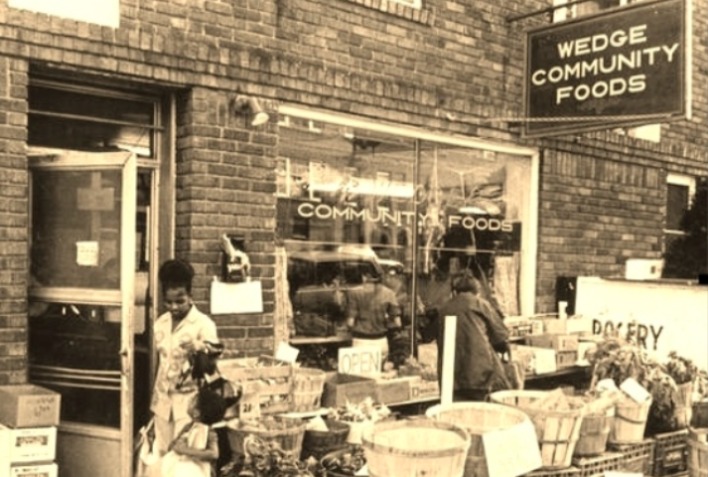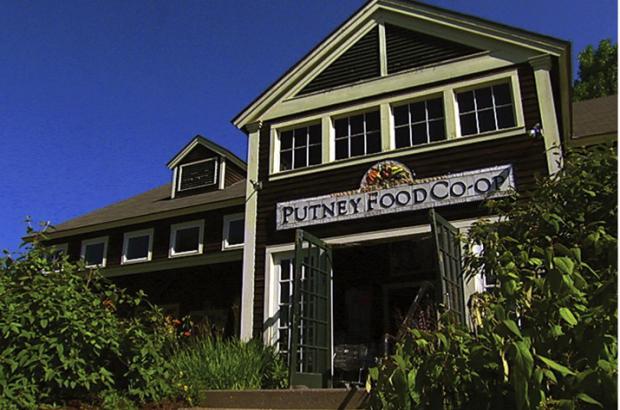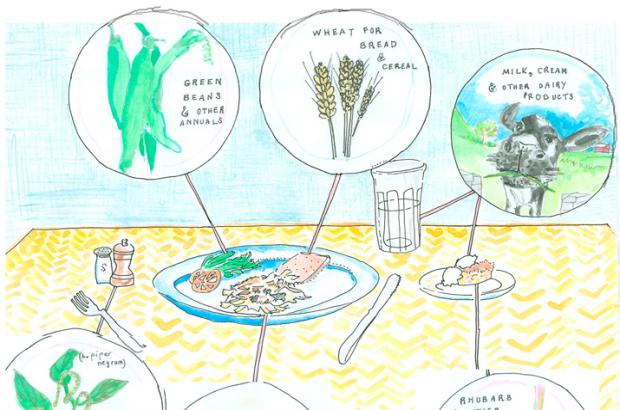Article
A Short History of Black Cooperatives in America

The long tradition of African American cooperation is not well known, and in her book Collective Courage: A History of African American Cooperative Economic Thought and Practice, Dr. Jessica Gordon Nembhard sets out to remedy that gap in our knowledge. From mutual aid societies to independent fugitive communities and from farmer cooperatives to consumer co-ops, Professor Gordon Nembhard details how people work together in the face of racism and active sabotage to improve each others’ lives in tangible ways. Cooperation has proved a powerful tool against discrimination. In honor of the Black Lives Matter movement, we’ll survey a small part of the rich cooperative history that Gordon Nembhard chronicles.
While African Americans have utilized cooperation since they were enslaved and brought to America in the early 17th century, the first recorded cooperative efforts were mutual aid societies in the late 18th century. Both free and enslaved Black people pooled money to pay for things like burials, land, helping the sick and the orphaned, and even buying freedom for one another. Early forms of cooperation ranged from mutual insurance companies to buying clubs to collective farming. The Underground Railroad is a famous example of cooperative effort.
During the Civil War, the disruptions of war sometimes actually created new cooperative possibilities. For instance, the Combahee River Colony in South Carolina was formed by African American women (the men had joined the Union Army) who grew cotton on abandoned farms, remaining independent and eventually becoming a community of several hundred women. Women often founded and ran African American cooperative efforts.
After the war, Black farmers started the Colored Farmers’ National Alliance and Co-operative Union when the Southern Farmers’ Alliance would not admit Black farmers except in separate chapters, and by 1891 the cooperative had more than a million members. The Union stressed mutual aid—sharing farming techniques and coordinating planting and harvesting—as well as political participation. The members also started a lot of co-ops. The cooperatives siphoned off trade from White-owned businesses, leading to various kinds of retaliation—sometimes slander, sometimes violence. By 1896 the Union was gone, but in 1922 the National Federation of Colored Farmers formed to increase Black farm ownership and improve farm businesses though cooperative buying, production, and marketing. Tenant farmers and sharecroppers joined the cooperative, and by the time it ended ten years later, most members had been able to buy their own farms. Co-ops of all types are often short lived, but their rippling effects can be impressive, including training activists and leaders, improving individual lives and leading to new ventures and co-ops.
African American activists were also inspired by the cooperative principles set out by The Rochdale Society of Equitable Pioneers, a co-op founded in 1844 in England (and often called the start of the modern cooperative movement). Many Black-owned consumer cooperatives were established at the end of the 19th Century and the first half of the 20th: grocery stores, gas stations, credit unions, insurance co-ops, and some housing co-ops. In 1907 W. E. B. Du Bois held a conference on cooperatives and listed 154 current African American co-ops. In Ruthville, Virginia, for example, the Mercantile Cooperative Company was established in 1901. This successful cooperative coexisted amicably with the White-owned store across the street. The community also raised money to build a new school—like the Rochdale Equitable Pioneers, African American cooperatives often stressed education, hosting study groups and evening classes. And interestingly, Black colleges were ahead of the curve on teaching cooperative economic theory; most had it as part of their curriculum by 1940, something large universities still do not usually offer even today.
Another important cooperative was the Young Negro Cooperative League, founded in 1930 with a mission “to gain economic power through co-operation.” Although short-lived, this co-op inspired many other cooperative efforts and trained people who later became activists. For instance, Ella Baker was the League’s national director, and she went on to help found SNCC (the Student Nonviolent Coordinating Committee), one of the seminal groups of the Civil Rights Movement of the mid-twentieth century. Through her work in the Young Negro Cooperative League, Baker learned, as Gordon Nembhard notes, to focus on “grassroots leadership, education, democratic decision making, and a step-by-step, transformative process of working toward long term goals.”
While cooperatives were a training ground for activists and leaders of the civil rights era, the movement in turn led to more co-ops. A particular success was the Freedom Quilting Bee, founded in 1967. Women from southern sharecropping families joined to craft and sell quilts. With the money they earned, they bought land and built a sewing factory. They also sold some of the land to families who had been evicted for civil rights activities. The Freedom Quilting Bee was a founding member of the Federation of Southern Cooperatives (FSC), which still thrives today. The Federation was created to “promote cooperative economic development as a strategy (and philosophy), to support and sustain Black farmer ownership and control over land, to support the economic viability of family and independent farm businesses—especially small, sustainable, and organic farms.” Find out more or donate towards their work at https://www.federation.coop.
Black cooperatives are still solving problems and creating opportunities today. For instance, the multi-ethnic youth group Toxic Soil Busters Cooperative in Massachusetts detoxified soil in their community during the eleven years of its existence. The Ujamaa Collective was founded in Pittsburgh by African American craftswomen to create a marketplace for their wares. Read about them online and shop at https://ujamaacollective.com. And the largest worker co-op in the United States today is comprised largely of Black and Latina women—the Cooperative Home Care Associates (CHCA) in the South Bronx. The cooperative provides benefits almost unheard of in the home-care industry, from small interest-free loans to free income tax preparation services to paid vacation and health insurance. Not to mention dividends! It also helps other co-ops get started, an example of co-ops helping co-ops, fulfilling Principle 6 of the International Cooperative Alliance. The immense success of the CHCA indicates the power of cooperation to improve lives.
These are just a few examples of African American cooperation over the last several hundred years. Much of the history of this cooperation and its profound effects have been lost because it was not recorded, but Jessica Gordon Nembhard’s book thoroughly reviews the information available.
At this time when we are all thinking about how we can work to finally fulfill the promise of our Declaration of Independence—that all people are equal—cooperation can be a powerful tool. We can support cooperative efforts that work to dismantle racism and we can continue to work to make sure everyone is welcome at our co-op. As a country we have a long way to go, but step by step, we can make the world a better place for all of us.
Below is a video with summary of the Collective Courage book mentioned above featuring Dr. Jessica Gordon Nembhard.
Article republished with permission from The Food Co-op (Port Townsend, WA). Image sourced from Shareable.net.













